Step 6: Diagnosis
In this session, we’ll be looking closely at the behaviors we uncovered in steps four and five to see the unhealthy patterns that consciously or unconsciously sabotaged our spiritual progress. Here is Step 6:
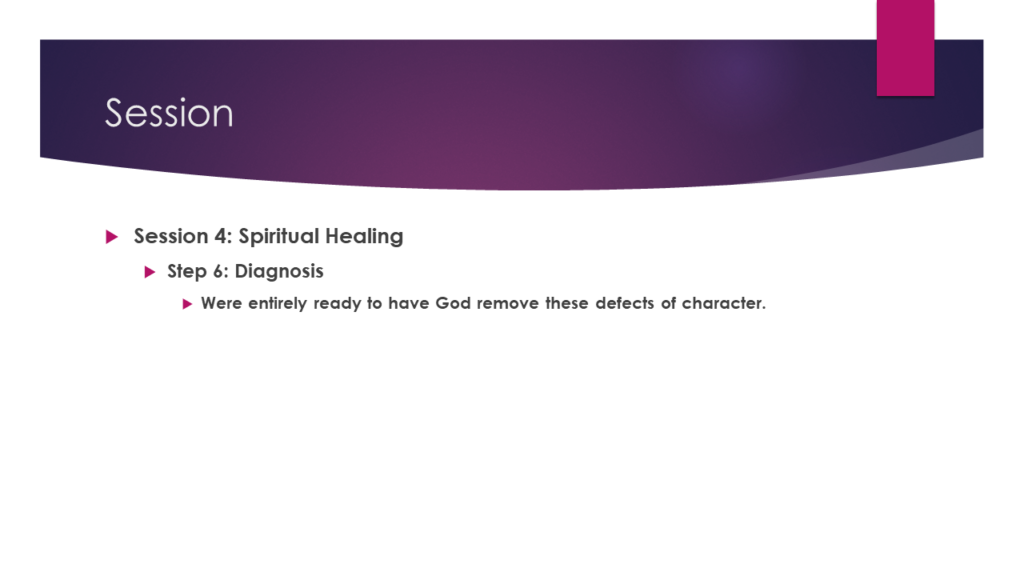
“Were entirely ready to have God remove these defects of character.” In the same way a good doctor orders an extensive array of tests before providing the patient with a prescription or prepping the patient for surgery, so we need to have a good understanding of those areas of our character that will need us to address them. There are many things that we can do to help the wounded areas of our personality heal, but, since we are powerless over our ultimate destinies, our best efforts can only go so far. Remember that “I can’t; God can; I think I’ll let him.” Despite our best efforts, it will ultimately be up to God to remove our defects.
What about these “defects” or “flaws” in our character? What are they, and where did they come from? Let’s talk some more about them.
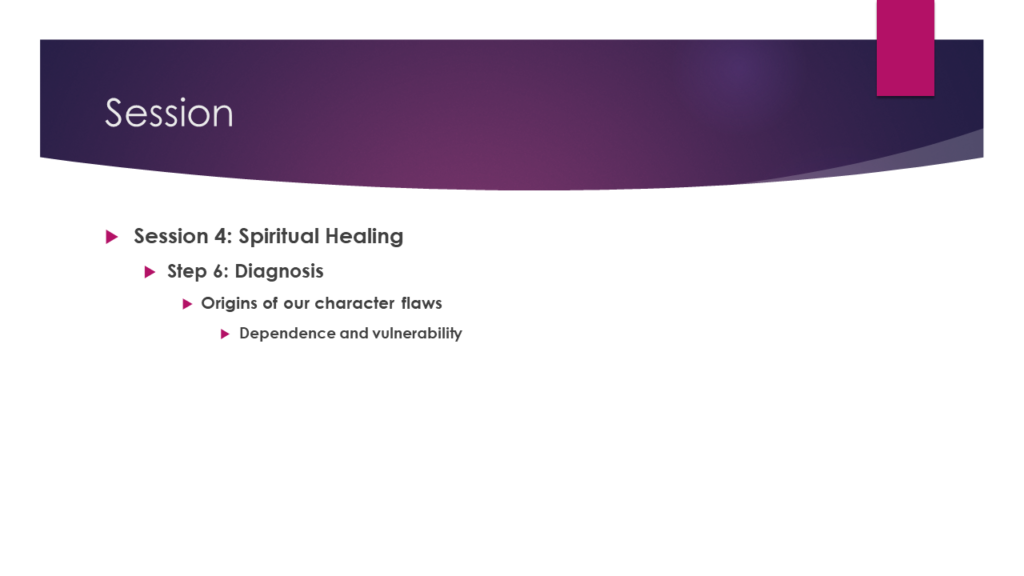
Remember the old saying, “As the twig is bent, so grows the tree?” Infants and young children have a common characteristic: they are particularly vulnerable. That word, “vulnerable” is derived from the Latin word, vulnus, meaning “wound.” Vulnerable, then, literally means “capable of being wounded.” We can be wounded by anything that fails to supply us with what we need, physically, mentally, emotionally, or spiritually. Because we begin life as individuals who are totally dependent on others for our well-being, the more dependent we are, the more vulnerable we are.
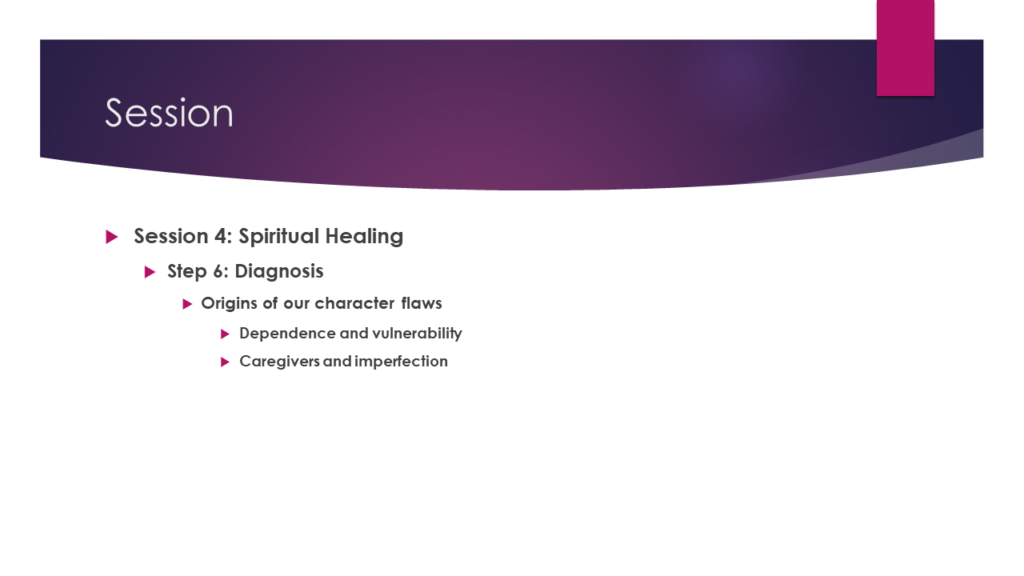
Since, as infants, we are dependent on our caregivers literally for our lives, whatever character flaws those parents and other caregivers suffer from become weapons that wreak havoc on those who depend on them. Regardless of how good their intentions are, the seven deadly sins of pride, greed, anger, envy, lust, gluttony, and sloth become weaponized when used against children. As much damage is done by inadvertent behavior as by deliberate neglect or harm. Spiritual illness is the unwitting legacy passed down from one generation to the next. In its origins, spiritual illness is, indeed, a family disease. One might even call it the original sin. Therefore, it’s useless to talk in terms of victimhood, blame, or responsibility. In short, no one gets out of childhood unscathed.
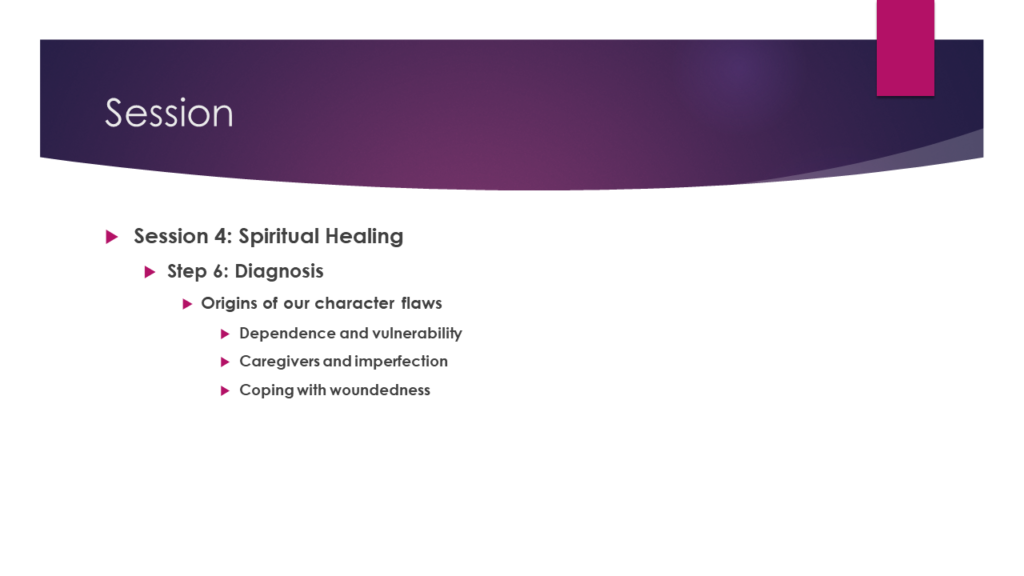
If none of us escape childhood undamaged, how do we cope with our woundedness? We develop necessary survival techniques to provide ourselves with the safety and security that we lack, to allow us to function in the physical, mental, emotional, and spiritual world, and to enable us to meet our essential needs. These coping mechanisms aren’t in themselves bad. We’ve adopted them because, at least at some level, they work. They may not be perfect, but they’re necessary and for us as children they were the best we had. There are only so many options open to an infant or child struggling to make it in what seems like a very hostile world. If you’re not given the tools, you have no choice but to make up your own.
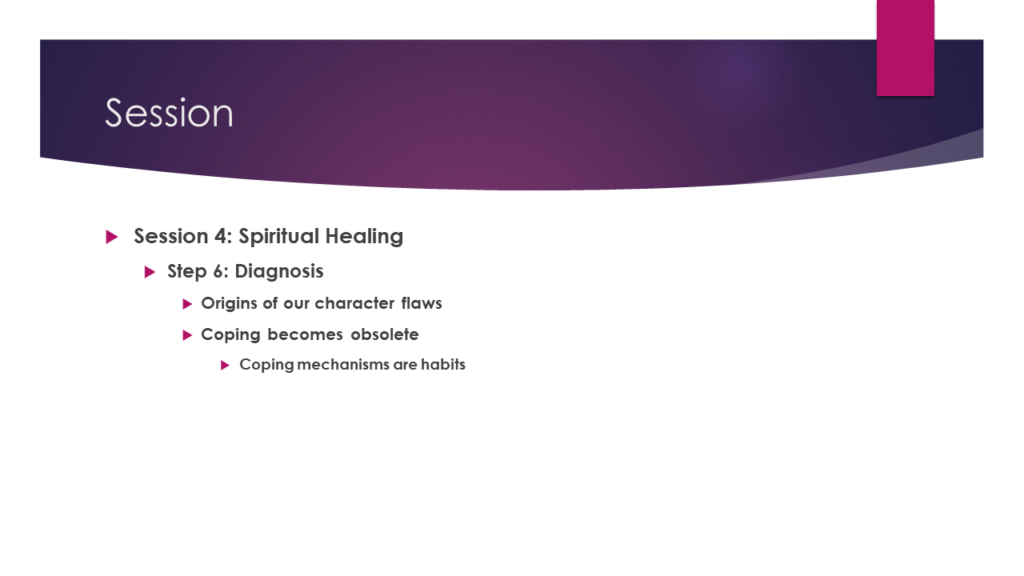
The infant or child adopts coping mechanisms for survival. When a given method works and the child gets what she or he needs or wants, it very quickly becomes the go-to methodology for similar circumstances. We can’t underestimate the influence of imitation here, either. If the child sees caregivers getting what they want using a certain tactic, that’s the tactic they’ll try in social situations to attempt to achieve similar results. Either way, when a mechanism provides successful results, it becomes a habit, especially when other methods consistently result in failure.
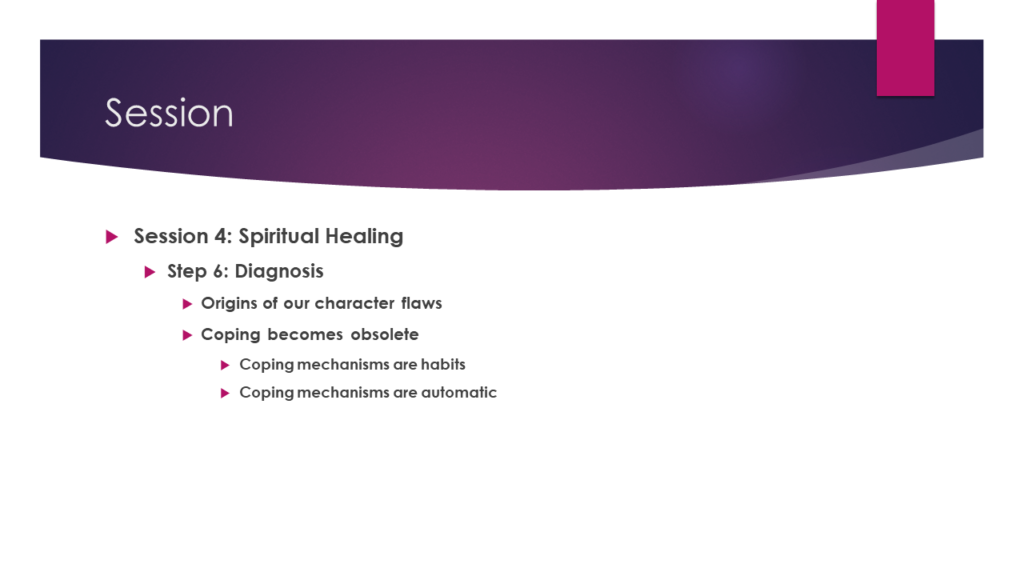
When a habit becomes sufficiently ingrained, it becomes not only the best method for attaining one’s desired results, but eventually the only method. Other options don’t even come to mind. When coping mechanisms become automatic, they also become unconscious. We’re not even aware of what we’re doing. It just feels natural and normal. It feels like the right way to do things. Regardless of how “right” or “wrong” these approaches may seem from the outside, from the inside, they feel proper, even virtuous.
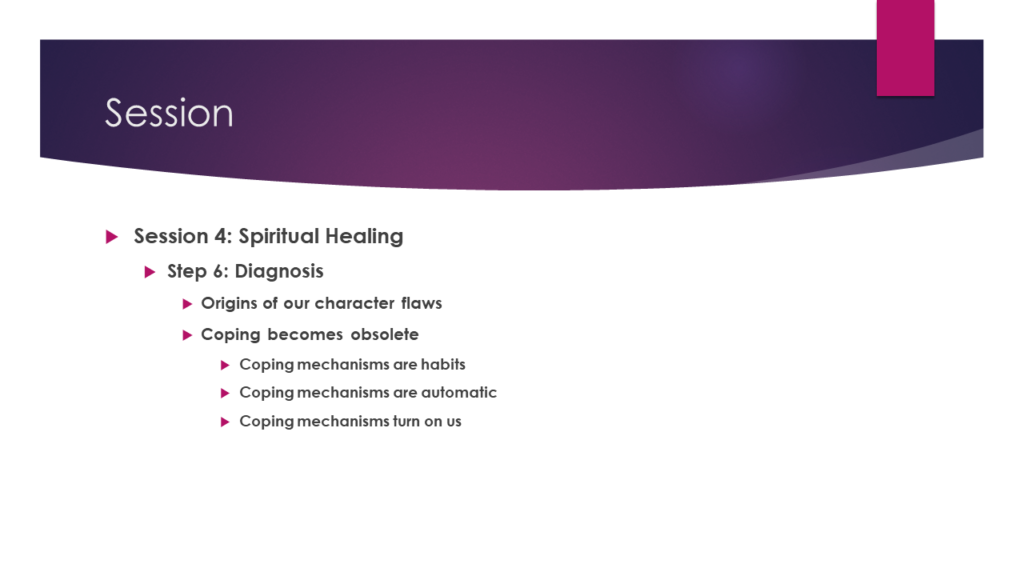
Once we’ve outgrown the need for these coping mechanisms, they become dangerous. From a moral perspective, since they’re automatic, they never provide us with moral cues. We don’t feel guilt or shame when using them because that’s just the way things are. And, from another perspective, they stop providing us with what we want…in many cases, they result in our getting exactly what we’re trying to avoid. Using childish approaches to adult problems is a recipe for failure, however, they’ve become so ingrained that we can’t imagine any other way forward. We ho motivation to change our behaviors. Rather, we use our defense mechanisms to explain away why they’re not working. We deny that our actions have failed. We blame our failures on others. We escape into fantasy or addiction to avoid facing them. Denial, blame, and escape—remember those three from Step 1?
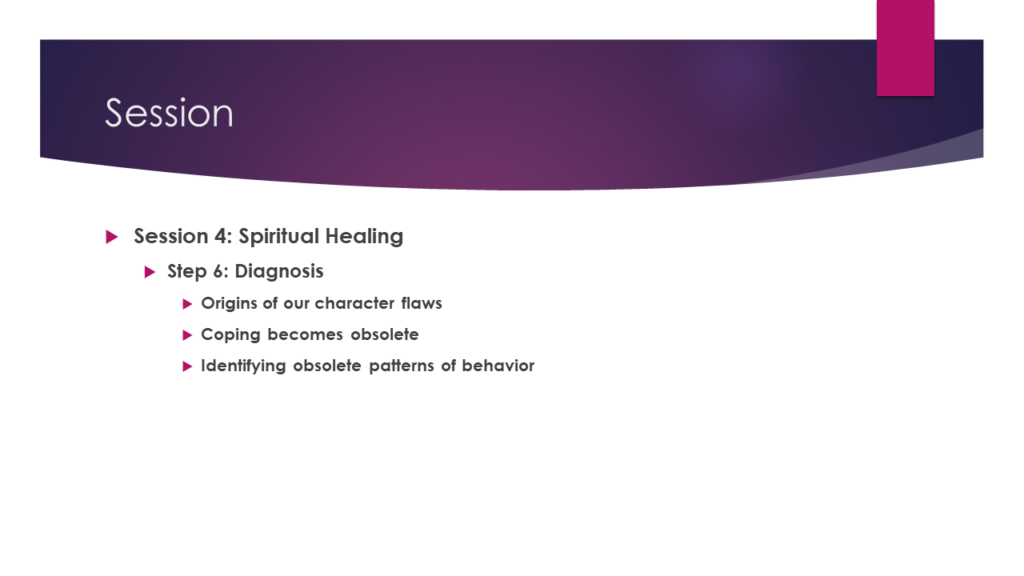
Since all these obsolete coping mechanisms are, for the most part, unconscious, we are going to need help identifying them. In Step 4, you made a good start by listing your resentments and fears and uncovering your part in causing them. Let’s look again at the Resentments Analysis sheets. Please turn to them if you have them handy.
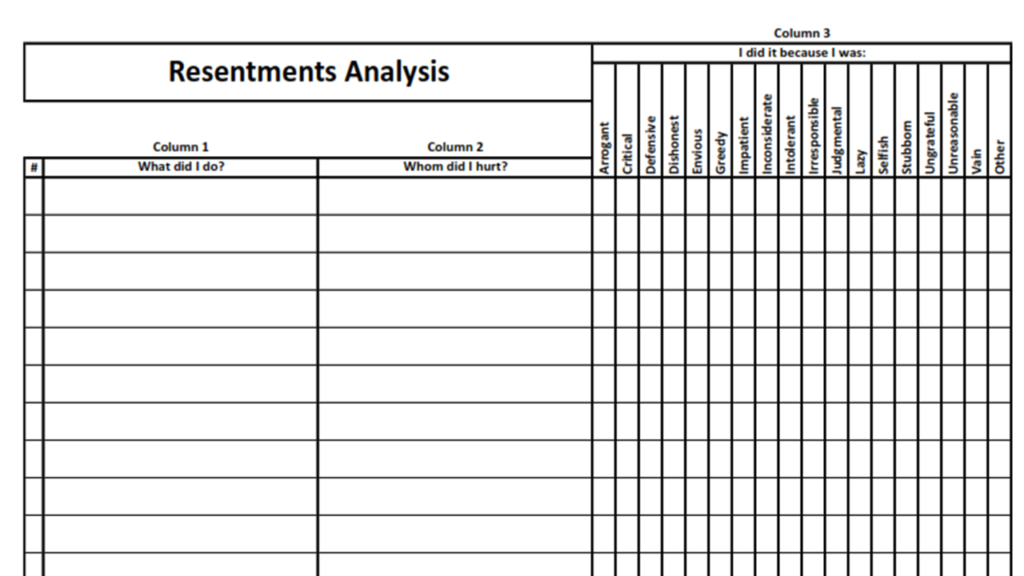
Remember your entries in Column 3? These are our motivations and the character flaws that we’ve identified so far. Each of your entries on the Resentments Analysis and Fears Analysis forms should have one or more of these character flaws identified.
Now, we need to look at the Sixth Step Inventory form. Once again, it’s available in printable (.pdf) format or fillable Excel (.xlsx) format:
You may download or print out the Sixth Step Inventory form, and you should only need one copy.
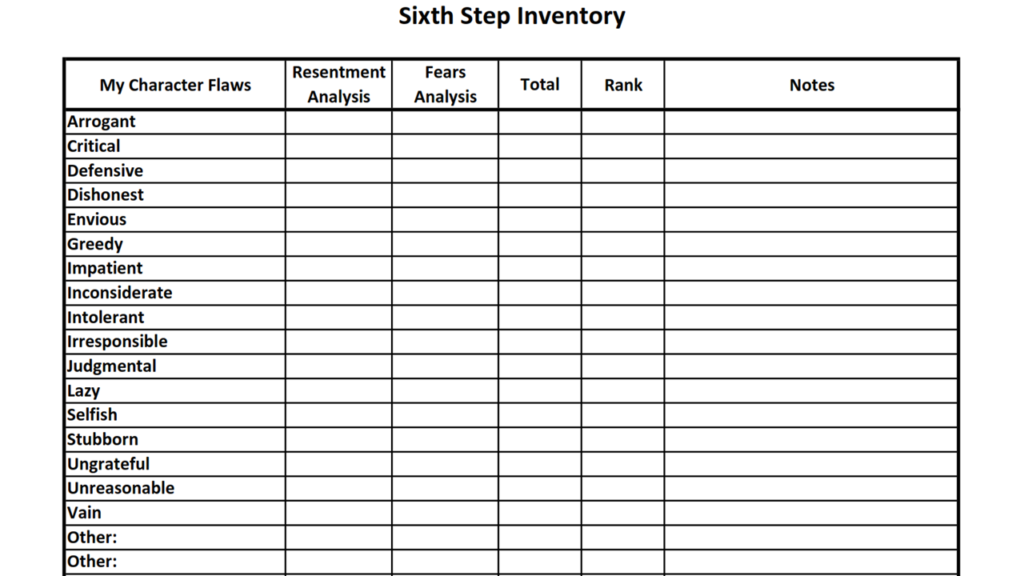
When you examine the Sixth Step form, you’ll see that the character flaws on this sheet match the list in column 3 of the Analysis forms, only they’re listed vertically rather than horizontally.
For each character flaw on your Resentments Analysis sheets, count down the number of checkmarks in each column and enter that number into the Sixth Step Inventory sheet in the “Resentments Analysis” column opposite the appropriate character flaw listed on the left. If you’ve added any other character flaws to your Analysis sheets, list them on the rows marked “Other.” Next, go back and do the same thing with your Fears Analysis sheets entering the column counts into the Fears Analysis column on the Sixth Step Inventory. When you’ve completed the count, enter the totals for each row in the Total column. Finally, rank the character flaws (one through ten) from the highest total to the lowest. The notes column can be used for saving any thoughts you may have as you go along. Save the Resentments and Fears Analysis sheets. We’ll be using them again next week.
Now that we’ve listed these character defects—the obsolete coping mechanisms from our past—you may think our diagnosis is complete. It is…almost.
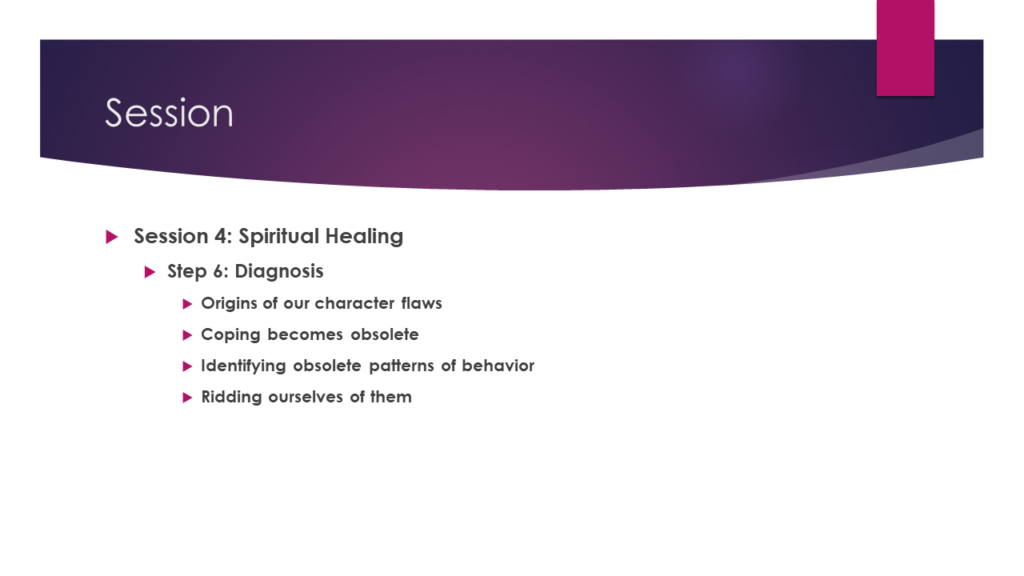
Look over your character flaws carefully, especially the ones you use most frequently. In order to cure the spiritual illness, it’s going to be necessary to rid ourselves of all of them…not just some. As you review them, you may find yourself saying things like, “I’m not that vain,” or “People can be so stupid; they need to be told what’s what.” The great danger at this point of our process is falling into the trap of self-justification. Whatever reasons your mind comes up with to excuse your behavior is pure rationalization. It’s the same as saying, “I can’t imagine that this applies to me.” Here’s an important piece of advice as you pursue this process from here on out: drop the explanations. You’ll discover that whenever you find yourself explaining why you did something or why you need to do something, you’re making excuses for a character defect. If your conscience is clear, you don’t need to explain anything to yourself or to God. If your behavior is ethical, you don’t owe anyone else an explanation.
This step says, we “were entirely ready to have God remove these defects of character.” That means all of them, without exception. Until you’re entirely ready, don’t move on to Step 7.

